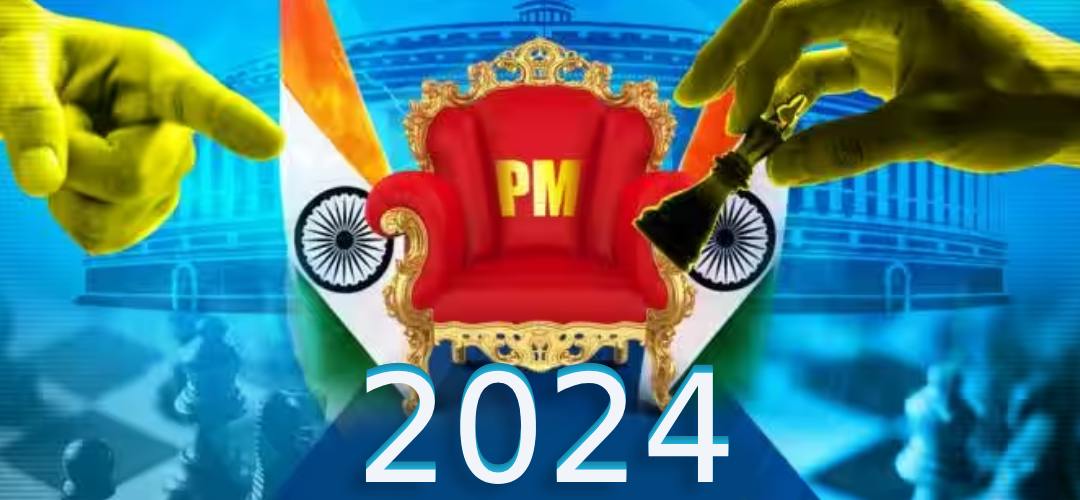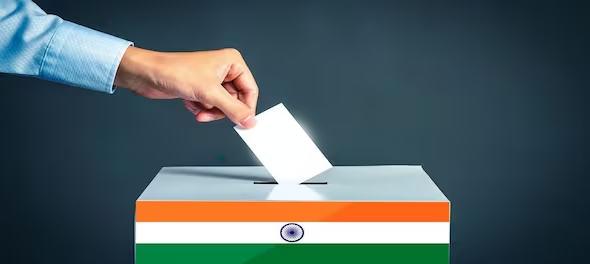Indian Elections-2024: First Impressions
December 30, 2023 | Expert Insights

With the verdicts of six state assembly elections in, all eyes are now on the upcoming general elections in April-May 2024. Notwithstanding the Bhartiya Janata Party (BJP) victories in three states, the INDIA opposition alliance comprising 28 parties is determined to prevent the BJP-led NDA central government from winning a third term.
This is likely an uphill task: the opposition parties will face many obstacles to pose a credible challenge to the incumbent Modi government.
Background
In June this year, leaders of opposition parties agreed to join hands and fight the 2024 general elections on a united platform against the ruling BJP-led NDA government. The new opposition alliance has cannily named itself INDIA (Indian National Developmental Inclusive Alliance) to challenge the BJP's claim of representing Indian nationalism and frame the match as one between the BJP and INDIA. However, while smart branding may boost business sales, it is no guarantee for electoral success.
First and foremost, historical rivalries and differences continue to bedevil the alliance. Many parties forming the INDIA alliance are regional rivals and lack a cohesive national presence. Together, they account for less than half of the BJP seats in the 542-member lower house of parliament, but this need not be an obstacle if they really decide to pool their resources to present a credible option to the voters. So far, there is little evidence that this is being worked upon. However, opposition leaders declare that a consorted campaign and one-on-one constituency matches could change the game.

Analysis
INDIA aims to directly fight the BJP by setting up a contestant against a BJP candidate in every voting district. The opposition alliance is also challenging the ruling central government on economic issues like growing unemployment and other issues like anti-Muslim sentiment.
The INDIA alliance has to cross several hurdles to pose a credible challenge to the well-oiled party structure of the incumbent party. Only the Congress can field a party structure at the grassroots level on a pan-India basis to match the BJP. If regional parties agree to pool their resources with those of national parties like Congress and AAP, their combined strength could seriously challenge the BJP's ability to effectively spread the parties’ messages to the country's remotest corners.
The BJP has a massive lead in the seats it holds in the 543-seat lower house of parliament- almost 55 per cent. INDIA alliance will have to work hard to pose a serious challenge to the BJP to shake them out of this unassailable position; it could start by working out a seat-sharing arrangement on a national scale. The groundwork has to start with a fair discussion and agreement on seat sharing in every state, working on a mathematical model to target the constituencies where the BJP is winning by narrow margins due to cross-voting between rival opposition parties. In this, a major national party like Congress, which has a pan-India presence, will have to take the lead by sacrificing some seats in states where regional parties have a better chance of beating the BJP candidate, provided the Congress does not ‘steal’ their votes and puts its party structure behind the selected INDIA candidate irrespective of the party he belongs to. Similarly, regional parties will have to give up seats in some of their strongholds where the Congress has a strong presence but lacks the killing edge to win the contest. These give-and-takes are time-consuming and generate a lot of disgruntlement in deep-seated regional party politics based upon caste and tribal affiliations and require sacrifices at every level. We have to wait and watch if these seat adjustments take place or not in the near future and well before the election campaigning starts in real earnest. However, reaching a seat-sharing pact despite regional rivalries will be challenging, such as in West Bengal, where Mamata Banerjee's TMC and the Congress are at loggerheads.
Another challenge the opposition faces is fractions between its parties. For instance, the Aam Adam Party (AAP) and the Congress are competitors in Punjab and Delhi. In the past, India’s opposition parties have formed alliances (led by both the Congress and the BJP) to present a united front against incumbent governments. However, they have not always been able to remain together. The Congress, which has previously dominated regional parties, is now weaker and more apt to consider their demands. For instance, it publicly voiced support for AAP in its tussle with the Central government over the ordinance that brings administrative services in Delhi under central control.
Another challenge facing the opposition alliance is that several parties have heavyweight veteran leaders such as Sharad Pawar, Nitish Kumar, Lalu Prasad Yadav, and Mamata Banerjee. Given this, there may be conflict over who will be the prime minister, with older leaders less willing to make way for the younger generation. This could be the biggest hurdle in the way of alliance success, especially if the alliance decides to put off the nomination of the prime ministerial candidate until the elections have been won. With no specific choice for an opposition candidate for the prime ministership, voters will be hard to woo or convince.
The state elections don’t bode well for the opposition. Admittedly, assembly and parliamentary elections are as different as chalk and cheese. However, many key indicators can be gauged from the state assembly results. The Congress routed the BJP in Karnataka in May, initially boosting hopes for the opposition. However, the BJP’s subsequent victories in Chhattisgarh, Rajasthan, and Madhya Pradesh made it clear that the party still has a strong presence in Hindi-speaking central India. The Congress still boasts a sizable 40 per cent vote share in the major states - Rajasthan, Madhya Pradesh, Chhattisgarh, and Telangana - where assembly elections were held recently. Yet, the BJP is the clear winner.
Its advantage seems to be driven by the popular appeal of Mr Modi's central government, even at the regional level. For example, the BJP didn't have a notable state leader in Chhattisgarh. In the states of Madhya Pradesh and Rajasthan, it didn't field a Chief Minister candidate like Vasundhara Raje and Shivraj Singh Chauhan. It did field state party heavyweights who were also national ministers, or MPs or played a leading role in the party at a general level. However, 'Modi ki guarantee' was its focal campaign pitch in the three states. If this was Modi's impact at a state level where he was not literally on the ticket, the general elections where he is actually on the ticket will likely witness more support for the BJP.
The BJP's strong voter base in around 12 Hindi states in the heartland of North India contributes to its electoral superiority. In 2019, it won 177 of the 225 Lok Sabha seats in the Hindi belt, indicating that the Congress cannot seriously challenge the BJP in this zone.
Considering different voter blocs, the tribal vote for reserved seats geared towards the BJP in the Hindi heartland states, compared to previously when it was in favour of the Congress. The BJP’s decision to appoint Draupadi Murmu (from a tribal community) as president of India was a strategic move to win over the tribal regions. Women voters in north India have also been a key factor in the BJP's vote advances since 2014 due to women's welfare schemes featuring direct-benefit transfers. The Telangana results reveal Muslim consolidation in support of the Congress, shifting away from regional parties, similar to Karnataka, where large numbers of Muslim voters switched from JDS and other regionals to Congress. It remains to be seen who can capture the support of the Other Backward Classes (OBCs), India's largest single voter bloc.
Congress’s win in Telangana and Karnataka this year highlights the North-South divide in politics. The Congress benefitted from a strong local presence in these states, which worked better than the BJP’s bid to contest on the back of PM Modi and national concerns. Can the India alliance leverage a similar outcome in other southern states?
Assessment
- The BJP would be hard to beat. Mr Modi's popularity, combined with the party's strong base in the Hindi belt states and its consolidated advances in tribal and women voters, make for a strong potion. Moreover, there is little ambiguity over the BJP’s next prime ministerial candidate. Can the INDIA alliance match this?
- The INDIA opposition has the advantage of getting together a wide range of regional parties under its wing, provided it can successfully surmount internal rivalries to achieve a seat-sharing arrangement to challenge the BJP candidates in every constituency.
- The opposition alliance will also have to compete with the ruling government’s sizable and extensive welfare schemes featuring direct benefits. But this is a governance issue that today any party in power can implement if it wishes. The BJP has already created an ecosystem that any successor government can continue to implement/ improve/ enhance.








Comments